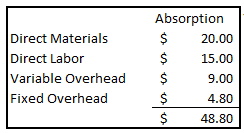Content

Accumulated income is the portion of a corporations’ net profits that are retained, rather than being remitted to investors as dividends. The par value of a stock is the minimum value of each share as determined by the company at issuance. If a share is issued with a par value of $1 but sells for $30, the additional paid-in capital for that share is $29. However, before you sit down to actually divide your profits, it is essential to understand basic terminology — retained profit, and the advantages and disadvantages of retained profit. For example, low retained earnings are common for young companies that are focusing on survival, as well as more mature companies that are focusing on expansion.
- Finance, a statement of retained earnings explains changes in the retained earnings balance between accounting periods.
- All such information is provided solely for convenience purposes only and all users thereof should be guided accordingly.
- This is the figure you’ll record in the retained earnings account on your next business balance sheet.
- A retained earnings deficit can also occur if the corporation issues more dividends than its current retained earnings balance.
- If large amounts of common stock are repurchased, it can lead to negative shareholder equity.
This balance sheet ensures that the assets on the books of a company are equal to the sum of the company’s liabilities and stockholder equity. Negative equity can arise if the company has negative retained earnings, meaning that their profits were not strong enough to cover expenses. Basically, stockholders’ equity is an indication of how much money shareholders would receive if a company were to be dissolved, all its assets sold, and all debts paid off. On the top line, the beginning period balance of retained earnings appears.
Video Explanation of Retained Earnings
This statement of retained earnings appears as a separate statement or it can also be included on the balance sheet or an income statement. The statement contains information regarding a company’s retained earnings, also including amounts distributed to shareholders through dividends and net income. An amount is set aside to handle certain obligations other than dividend payments to shareholders, as well as any amount directed to cover any losses. Each statement covers a specified period of time, usually a year, as noted in the statement.
- The cash value of the stock rewards may not be withdrawn for 30 days after the reward is claimed.
- An accumulated deficit occurs when a company has incurred more losses than profits since its inception.
- Additional paid-in capital reflects the amount of equity capital that is generated by the sale of shares of stock on the primary market that exceeds its par value.
- It’s more alarming when an established company that’s had years to accumulate earnings shows a retained earnings deficit.
- Our writing and editorial staff are a team of experts holding advanced financial designations and have written for most major financial media publications.
Finance, a statement of retained earnings explains changes in the retained earnings balance between accounting periods. Retained earnings appear on the company’s balance sheet, located under the shareholder equity (aka stockholders’ equity or owner equity) section. Businesses may report changes in retained earnings as part of a consolidated statement of shareholder equity, or as a separate statement of retained earnings. In some situations, the company might not directly explain changes in retained earnings.
Net Profit and Retained Earnings: What’s the Difference?
Basic Accounting EquationAccounting Equation is the primary accounting principle stating that a business’s total assets are equivalent to the sum of its liabilities & owner’s capital. This is also known as the Balance Sheet Equation & it forms the basis of the double-entry accounting system. Retained earnings represent what does negative retained earnings mean theportion of net profit on a company’s income statement that is not paid out as dividends. These retained earnings are often reinvested in the company, such as through research and development, equipment replacement, or debt reduction. Any changes or movement with net income will directly impact the RE balance.
- For instance, the first option leads to the earnings money going out of the books and accounts of the business forever because dividend payments are irreversible.
- For this reason, retained earnings decrease when a company either loses money or pays dividends and increase when new profits are created.
- Retained earnings are considered equity and are listed as such in the corresponding section of the balance sheet under shareholders’ equity.
- While sales may be consistent, they can ultimately provide little growth if they are repeatedly put back into sustaining the company’s office space, equipment, payroll, insurance, etc.
